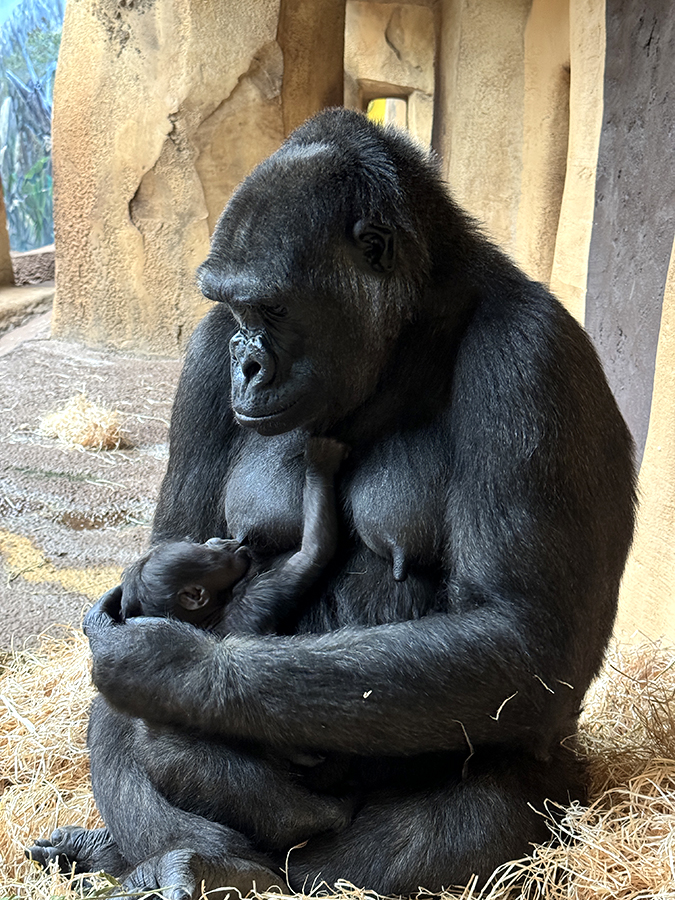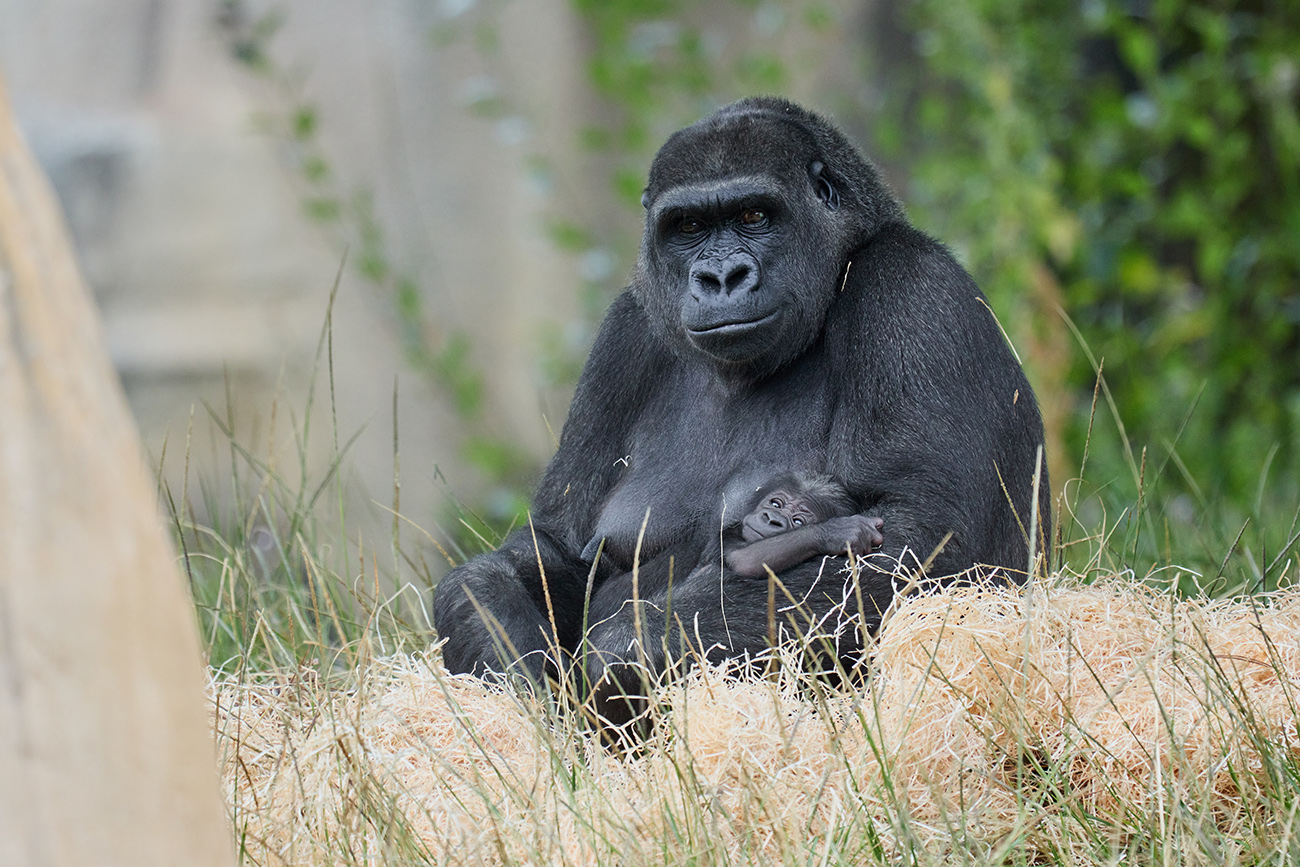Rare baby gorilla born at La Palmyre Zoo

Extraordinary births follow one another at the zoo! After two giant otters born in February and a giraffe calf born in April, a rare baby gorilla was born at the park in early August.
Our female Ybana gave birth in the middle of the day in the outside exhibit where she lives with 3 other gorillas: her 14-year-old daughter, her 8-year-old son and the silverback Nyuki. This is the fourteenth gorilla birth recorded by the zoo since the arrival of the species in 1974 and the very first birth that occurred a few years later in 1978.


This is also the fourth baby of this female and the very first one of our silverback who thus welcomes his first descendant at the respectable age of 34! Only very few believed that he would ever be able to breed considering what happened during his debut: raised by the zoo staff during the first months of his life because of his mother’s lack of maternal instinct, Nyuki then spent many years living with other males before eventually being integrated into a female group in 2015.
While his hand-rearing may have impacted the acquisition of some social codes specific to his species, early contact with his 6 month-older hand-raised half-brother nevertheless limited his imprinting and helped his introduction as the leader of a harem years later. However, no pregnancy had been recorded since he had been sharing his daily life with several females. But good things come to those who wait and almost 10 years after the creation of this breeding group, Nyuki eventually sire offspring. The infant-a female, is doing great as is the rest of the family group.


From birth the young gorilla clings to its mother’s hair with a powerful grip from both their hands and feet. During the first months, it is in constant contact with her. She usually holds it on to her chest, or in the palm of her hand while the baby firmly clings to its arm. Our female Ybana even uses unconventional holding methods, for example on to her leg! Between 3 and 6 months, the female gradually moves her baby to her back to be able to move around more easily. The young gorilla becomes independent between 3 and 6 years old, spending most of its time playing with the other members of the group, especially brothers and sisters, and improving its skills. Males and females leave their natal group when they reach sexual maturity, at around the age of 7/8 for the females and the age of 16 for the males.
There are 2 species and 4 subspecies of gorillas in Africa. Western Lowland Gorillas are those who can be seen in zoos. The species is highly threatened in the wild due to the destruction and fragmentation of its habitat. Poaching for bushmeat or wildlife trafficking as well as infectious diseases, especially Ebola virus disease that can lead to a mortality rate of 95% in a population, also constitute significant threats to the species, particularly in the western part of its range. The low reproduction rate of gorillas (one baby every 4 or 5 years) prevents rapid population recovery when a sudden and significant decline occurs. Western Lowland gorillas are classified Critically endangered on the IUCN Red List.
Palmyre Conservation is one the few organizations that funds the conservation of the 4 subspecies of gorillas. The endowment fund of La Palmyre Zoo supports the CAMBIO association that preserves western lowland gorillas in Cameroon, WCS that protects Cross river gorillas in Nigeria and the Virunga Foundation that saves Grauer’s and mountain gorillas in DRC.
